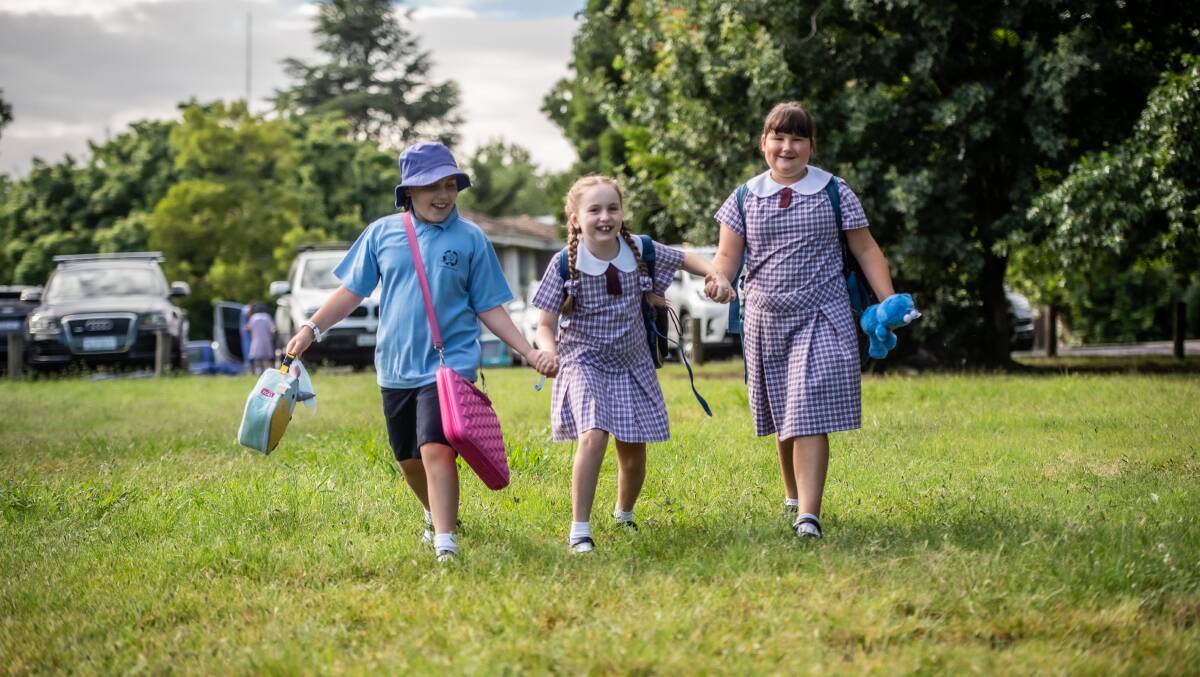Schools opened three weeks ago amid worries that the Omicron strain would lead to a spike in COVID-19 case numbers and place enormous strain on the teaching workforce.
But the worst fears have not come to fruition. Here's what has happened on the ground.
Has the start of the school year increased COVID transmission?
The return to school has not had much of an impact on case numbers, according to infectious diseases physician Professor Peter Collignon.
"There hasn't been a big change in the epidemic curve. In other words, there hasn't been a really big spike up again, or even much of a spike at all," Professor Collignon said.
"What we're seeing in schools is probably a reflection of what's in the community and even if we see more in children, it's more because they're tested more rather than necessarily they're a bigger risk."
He said COVID-19 behaves differently in children compared to other viruses. This could be linked to children having fewer ACE2 receptors, which is a protein the SARS-CoV-2 virus uses to enter cells in the body.
In week one, the Education Directorate reported 240 cases in 68 public schools. A directorate spokesman said data for non-government schools was not available for that week.
In week two there were 909 COVID-19 cases reported to 119 schools, which meant 90 per cent of schools had at least one case.

While the vast majority of schools have had a case on campus, there is not a lot of evidence that people have been contracting the virus in schools.
ACT Health Minister Rachel Stephen-Smith said three schools have had to call in ACT Health to help manage an outbreak on campus this term.
This is out of a total of 137 schools in Canberra.
Relatively, going to school does not present a bigger risk than other activities.
"It's the same if you look at Denmark, Canada, England, schools have not been a major contributor to the spread of COVID, not that they haven't had any effect, but they're not but you know, bars, restaurants and clubs have a much bigger impact," Professor Collignon said.
Has there been teacher shortages?
Staffing has been stretched but not to the worst-case scenarios that were feared before the start of term.
The director of Catholic Education in the Canberra and Goulburn Archdiocese, Ross Fox, said the level of absenteeism in staff was higher than usual for the start of the year.
"The absenteeism that we're seeing is no is in fact no higher and often lower at a system level than we see during winter," Mr Fox said.
Catholic school administrators have been contacting retired teachers and principals to ask them to offer their services as relief teachers in case of higher absenteeism.
Mr Fox said the system was postponing some meetings and professional learning offerings that would normally take staff out of the classroom to not put extra pressure on the supply of casual teachers for schools.
"There's a couple of individual schools where for different reasons there's high absentee rates of staff. It's not outside our experience," he said.
"So overall, given how we've approached it, the planning we've put in place, the great cooperation and commitment of our staff, students and families, it's manageable at the moment."
The Canberra Times requested data on teacher unplanned absences in ACT public schools but the Education Directorate did not respond by deadline.
Australian Education Union ACT branch president Angela Burroughs said some schools were coping better than others with staff absences.
"What we do know is that there's an underlying staff shortage. So it may not be a major problem at this stage, but it's an underlying concern that needs to be addressed in the ICT and across the country," Ms Burroughs said.
Is the rapid antigen testing program working?
The ACT government decided to continue to distribute two rapid antigen tests (RATs) per week to schools students and staff and early childhood educators until the end of week eight (March 25).
So far the ACT government has spent about $26.2 million on RATs to meet the demand of schools and other government programs. Tests cost between $4.50 and $9 each.
The federal government has promised to subsidise half of the cost of the tests for the first four weeks of school, despite surveillance testing not being recommended by the Australian Health Protection Principal Committee. The ACT is in discussions with the Commonwealth as to whether the school testing program will be subsidised for the next four weeks.
Association of Independent Schools of the ACT executive director Andrew Wrigley said the tests were helping to detect cases before they come onto campus.
"One school said they had a number of cases of students on a particular start of a week, but only four of them were at school because the rest had been identified using a rapid antigen tests," he said.
Are other COVID safety measures working?
Schools are trying to prevent cohorts mixing together and have stopped large assemblies and excursions to keep COVID infections to a minimum.
However, Professor Collignon said it's arguable how much individual mitigation strategies make to COVID transmission.
Masks reduce the risk by about 10 per cent, while having children outside would be more beneficial, he said.
"I think it's a good idea to be outdoors more and nobody sick should be at school. But still, the figures more reflect that what we're seeing in schools is a reflection of what's happening in homes and in the community rather than any major increased transmission in school."







